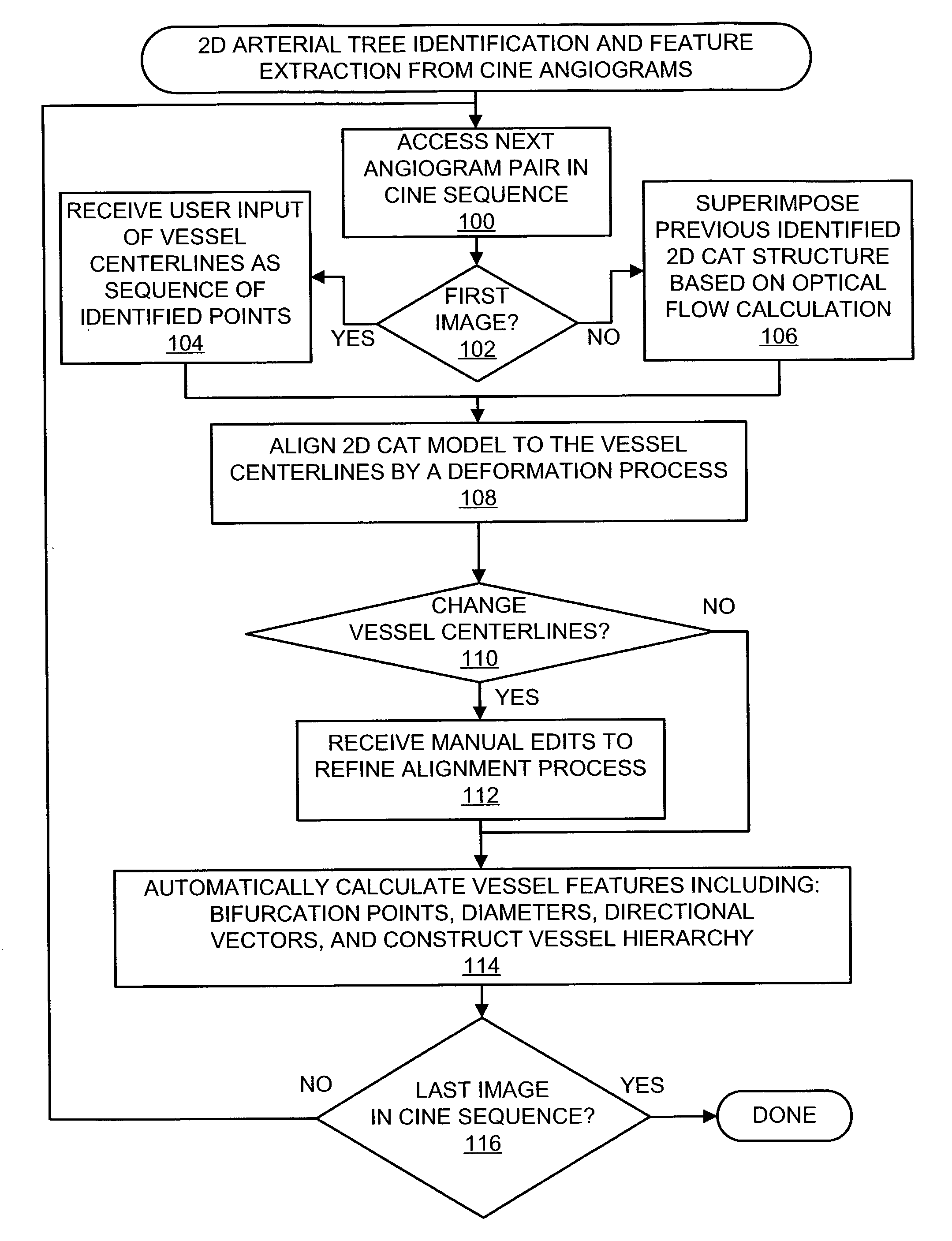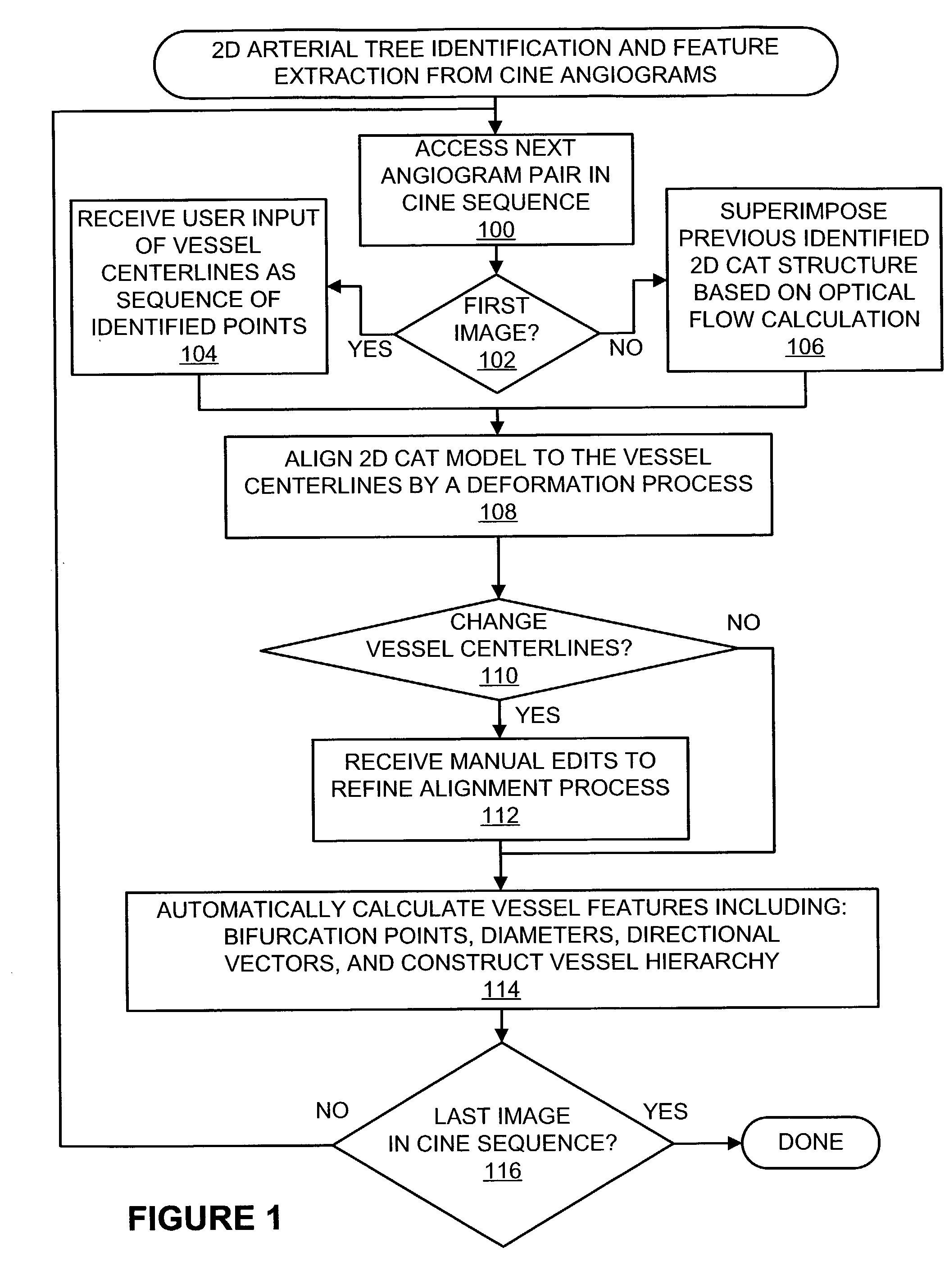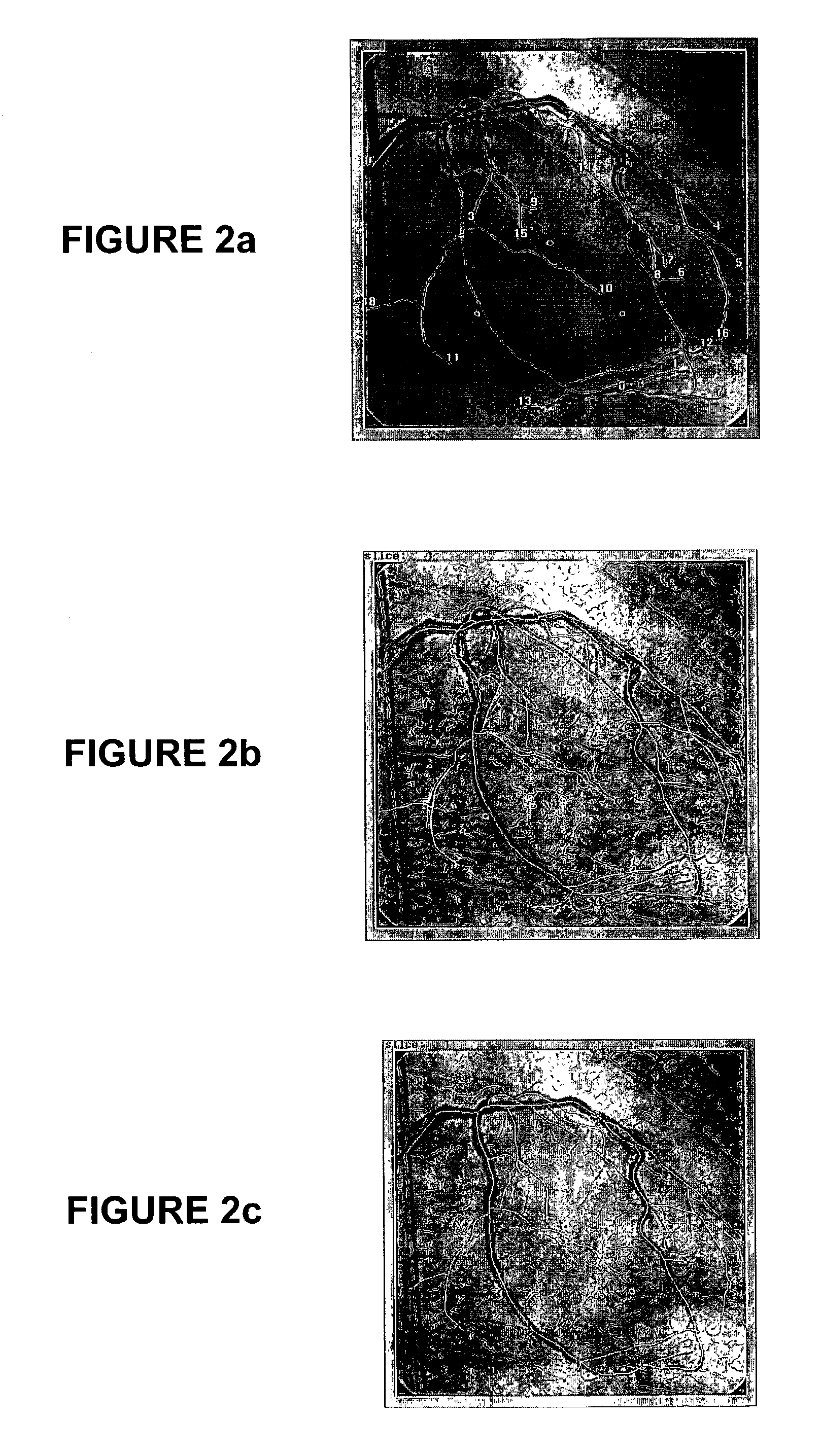Methods and systems for display and analysis of moving arterial tree structures
a moving arterial and tree structure technology, applied in the field of vascular tree structure reconstruction, can solve the problems of not providing anything but, limiting the ability to quantify the degree of straightening, and difficult to study the dynamic variations of coronary vascular curvilinearity, so as to improve patient outcomes, enhance patient safety, and better understand the target for intervention
- Summary
- Abstract
- Description
- Claims
- Application Information
AI Technical Summary
Benefits of technology
Problems solved by technology
Method used
Image
Examples
Embodiment Construction
[0041]Throughout this patent application, references are made to vascular and arterial tree structures as well as cardiovascular structures. As the terms relate to the present invention, all such vascular and arterial tree structures may be considered equivalent. Applications of the present invention are readily apparent in analysis of cardiovascular structures. Other applications for other vascular and arterial structures are similarly apparent to those of ordinary skill in the art. References herein to cardiac structures and motion should therefore be understood not as limitations on the application of the invention nor as limitations on the structures or methods of the claimed invention. Rather, all references to any particular vascular or arterial structure should be broadly understood to represent any arterial or vascular structure for which cine images of motion can be generated.
Reconstruction of Moving Coronary Arterial Tree
[0042]A first aspect of the present invention provid...
PUM
 Login to View More
Login to View More Abstract
Description
Claims
Application Information
 Login to View More
Login to View More - R&D
- Intellectual Property
- Life Sciences
- Materials
- Tech Scout
- Unparalleled Data Quality
- Higher Quality Content
- 60% Fewer Hallucinations
Browse by: Latest US Patents, China's latest patents, Technical Efficacy Thesaurus, Application Domain, Technology Topic, Popular Technical Reports.
© 2025 PatSnap. All rights reserved.Legal|Privacy policy|Modern Slavery Act Transparency Statement|Sitemap|About US| Contact US: help@patsnap.com



